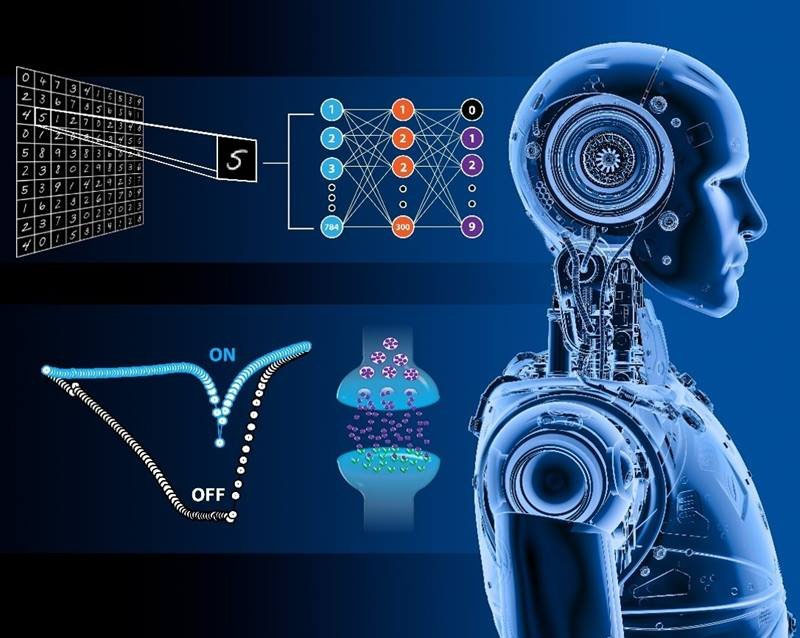| Oct 24, 2024 |
|
(Nanowerk News) A novel device consisting of metal, dielectric, and metal layers remembers the history of electrical signals sent through it. This device, called a memristor, could serve as the basis for neuromorphic computers—computers that work in ways similar to human brains. Unlike traditional digital memory, which stores information as 0s and 1s, this device exhibits so-called “analog” behavior. This means the device can store information between 0 and 1, and it can emulate how synapses function in the brain.
|
|
Researchers found that the interface between metal and dielectric in the novel device is critical for stable switching and enhanced performance. Simulations indicate that circuits built on this device exhibit improved image recognition.
|
 |
| A computer that uses electronic synapses made of terminals with a top electrode (TE), dielectric layer (DL), and bottom electrode (BE) can emulate the human brain. A neural network using these synapses shows improved image recognition in an MNIST test. (Image: Los Alamos National Laboratory)
|
|
Today’s computers are not energy efficient for big data and machine learning tasks. By 2030, experts predict that data centers could consume about 8% of the world’s electricity. To address this challenge, researchers are working to create computers inspired by the human brain, so-called neuromorphic computers.
|
|
Artificial synapses created with memristor devices are the building blocks of these computers. These artificial synapses can store and process information in the same location, similar to how neurons and synapses work in the brain. Integrating these emergent devices with conventional computer components will reduce power needs and improve performance for tasks such as artificial intelligence and machine learning.
|
|
Scientists at the Center for Integrated Nanotechnologies at Los Alamos National Laboratory and their collaborators fabricated artificial synaptic devices and discovered that the interfacial properties between metal and dielectric layers in those devices play critical roles in determining the devices’ resistance states.
|
|
This underlying switching mechanism is important for using these devices for real-world applications. Since the switching device is controlled by the interface, these novel devices offer many advantages over conventional computing devices, including analog-type memory, uniform switching, low power consumption, and high scalability.
|
|
The research showed that the simple two-terminal device emulates several synaptic functions in the brain. Taking learning as an example, in biological systems, learning relates to a mechanism called “spike-timing-dependent plasticity,” which adjusts the strength of connections between neurons in the brain. Two neurons are connected by a synapse and the connection strength is called “synaptic weight.” This weight or connection strength between two neurons changes depending on the relative timing of neuron firing.
|
|
This process is important for our learning and memory. These novel memristor devices work in a similar way. The resistance states in these devices represent the synaptic weight and can be controlled by electric pulses. To demonstrate their potential applications, the researchers simulated an artificial neural network with this interface-type memristor device, then tested the network’s ability to recognize Modified National Institute of Standards and Technology (MNIST) digital images. The simulated neural network recognized these images with high accuracy after a few cycles of training.
|
Publications
|
|
Kunwar, S. et al. An Interface‐Type Memristive Device for Artificial Synapse and Neuromorphic Computing. Advanced Intelligent Systems 5, 2300035 (2023).
|
|
Kunwar, S. et al. Protons: Critical Species for Resistive Switching in Interface‐Type Memristors. Advanced Electronic Materials 9, 2200816 (2023).
|


